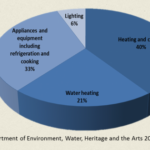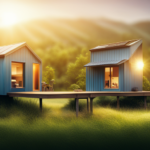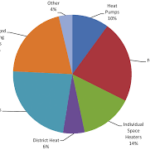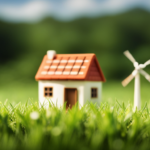Beginners Guides
How Many Kwh Does A Tiny House Use
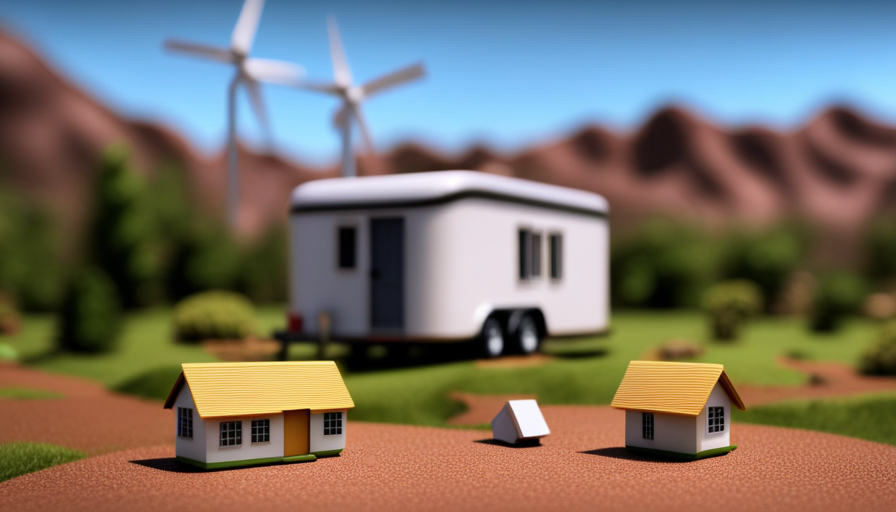
Are you prepared for an astounding discovery? Get ready, because I’m about to unveil a massive exaggeration: small homes are changing our energy consumption game! Indeed, these compact wonders of efficiency possess the capability to alter our existence and significantly reduce our carbon footprints.
But before we dive into the nitty-gritty details, let’s start with the basics: how many kilowatt-hours (kWh) does a tiny house use?
In this article, I will unravel the mysteries behind energy consumption in these miniature abodes. We’ll explore the factors that influence their electricity usage, take a look at average kWh usage in tiny houses, and uncover valuable tips to reduce energy consumption.
Additionally, we’ll delve into utilizing renewable energy sources and implementing smart home technology for efficient energy management.
So fasten your seatbelts and prepare to be amazed by the data-driven world of tiny house energy consumption. Get ready to embrace a greener future where small is not only beautiful but also incredibly eco-friendly!
Key Takeaways
- Tiny houses use an average of 2-5 kWh per day, compared to traditional homes’ average of 30 kWh.
- Energy-efficient appliances, such as LED lights and low-energy refrigerators, significantly reduce electricity usage in tiny houses.
- Proper insulation in tiny houses minimizes heat loss or gain, reducing reliance on heating or cooling systems.
- Utilizing renewable energy sources like solar power, wind power, and hydroelectric power can reduce or eliminate monthly electricity bills and carbon footprints in tiny houses.
Factors Affecting Energy Consumption in Tiny Houses
If you’re wondering how many kWh your tiny house uses, it’s important to consider the factors that can affect your energy consumption. One of the main factors is the use of energy-efficient appliances. Investing in appliances with high energy efficiency ratings can significantly reduce your overall electricity usage. Look for appliances that are ENERGY STAR certified, as these are designed to consume less energy without compromising performance.
Another factor to consider is insulation techniques. Proper insulation plays a vital role in minimizing heat loss or gain within your tiny house. This means less reliance on heating or cooling systems, resulting in lower energy consumption. There are various insulation options available such as spray foam insulation, rigid foam boards, and fiberglass batts. Each option has its own pros and cons, so it’s important to research and choose the one that best suits your needs.
By incorporating these energy-efficient appliances and effective insulation techniques into your tiny house design, you can significantly reduce your kWh usage. This not only helps conserve resources but also saves you money in the long run by lowering your electricity bills.
Now let’s delve into the next section where we will explore average kWh usage in tiny houses without repeating ourselves unnecessarily.
Average kWh Usage in Tiny Houses
You’ll be amazed by the average amount of electricity a tiny home consumes. Despite their small size, tiny houses are designed to be energy efficient and sustainable.
One of the key factors contributing to their low energy consumption is the use of energy-efficient appliances. These appliances are specifically designed to consume less electricity while still providing the necessary functionality for daily living.
On average, a tiny house uses around 2-5 kilowatt-hours (kWh) per day. This number may vary depending on factors such as climate, location, and individual lifestyle choices. However, compared to traditional homes that consume an average of 30 kWh per day, tiny houses are significantly more energy efficient.
The use of energy-efficient appliances plays a major role in reducing electricity consumption in tiny houses. These appliances include LED lights, low-energy refrigerators, and compact heating and cooling systems. By investing in these appliances, homeowners can greatly reduce their overall electricity usage without sacrificing comfort or convenience.
The average electricity consumption in a tiny house is surprisingly low due to the incorporation of energy-efficient appliances. By choosing these appliances wisely, homeowners can significantly reduce their environmental impact and save on utility bills.
Moving forward into the next section about ‘tips for reducing energy consumption in tiny houses’, it is important to consider additional strategies beyond appliance selection alone for maximizing efficiency and minimizing power usage without compromising comfort or functionality.
Tips for Reducing Energy Consumption in Tiny Houses
Reducing energy consumption in tiny houses is a breeze when you implement these power-saving tips. To optimize energy efficiency, consider investing in energy-saving appliances. These appliances are designed to consume less electricity without compromising functionality. They can significantly reduce your overall energy usage and save you money in the long run.
In addition to using energy-saving appliances, proper insulation techniques play a crucial role in reducing energy consumption. Insulating your tiny house effectively will help maintain a comfortable indoor temperature while minimizing the need for excessive heating or cooling. Consider using high-quality insulation materials such as spray foam or cellulose insulation to maximize thermal resistance.
Furthermore, adopting passive design strategies can further enhance energy efficiency in your tiny house. Passive design involves utilizing natural elements like sunlight and airflow to regulate indoor temperatures. This can be achieved through strategic window placement, shading devices, and adequate ventilation systems.
By implementing these tips, you’ll significantly reduce your overall energy consumption in your tiny house. Transitioning into the subsequent section about utilizing renewable energy sources is the next step towards achieving an even more sustainable lifestyle.
Utilizing Renewable Energy Sources in Tiny Houses
I will discuss the utilization of renewable energy sources in tiny houses, focusing on three key points: solar power, wind power, and hydroelectric power.
Solar power is a popular choice for tiny houses due to its abundance and reliability.
Wind power is another viable option, especially for tiny houses located in windy areas where there is a consistent source of wind energy.
Lastly, hydroelectric power can be harnessed if the tiny house is situated near a water source such as a river or stream with sufficient flow.
These renewable energy sources offer sustainable alternatives for powering tiny houses while reducing reliance on traditional grid electricity.
Solar Power
Imagine harnessing the power of solar energy and watching as your tiny house becomes a self-sufficient oasis, using only a fraction of the energy that traditional homes rely on. Solar power is an efficient and sustainable option for powering your tiny house.
Here are three key factors to consider when incorporating solar power into your tiny house:
-
Solar panel efficiency: Choosing high-efficiency solar panels will maximize the amount of electricity generated from sunlight. These panels can convert more sunlight into usable energy, ensuring optimal performance even in limited space.
-
Solar battery storage: Installing a solar battery system allows you to store excess energy generated during the day and use it at night or during cloudy days. This enables continuous power supply in your tiny house, reducing reliance on the grid.
-
Cost savings: By utilizing solar power, you can significantly reduce or eliminate monthly electricity bills, saving money in the long run.
Transitioning into wind power, another renewable energy option for tiny houses…
Wind Power
Transitioning into wind power, harnessing the power of the wind can transform your tiny oasis into a self-sustaining haven. Wind turbines are an excellent source of renewable energy that can generate electricity for your tiny house. By capturing the kinetic energy of the wind and converting it into electrical energy, you can reduce or even eliminate your reliance on traditional power sources.
The amount of electricity generated by a wind turbine depends on factors such as wind speed and rotor size. On average, a typical small-scale wind turbine produces around 1-10 kilowatts (kW) of power. This translates to approximately 24-240 kilowatt-hours (kWh) per day, depending on the wind conditions in your area.
Incorporating wind energy into your tiny house’s power system allows you to take advantage of nature’s abundant resources while reducing your carbon footprint. Moving forward to hydroelectric power, let’s explore another sustainable option for powering your tiny haven.
Hydroelectric Power
Harness the power of flowing water with hydroelectric energy, which can provide an efficient and sustainable source of electricity for your compact sanctuary.
Hydroelectric power involves converting the kinetic energy from moving water into electrical energy through the use of turbines. This renewable energy source offers numerous benefits, including reduced greenhouse gas emissions and minimal environmental impact.
Community involvement is crucial in implementing hydroelectric projects, as it requires cooperation between stakeholders to ensure proper infrastructure development and maintenance.
Sustainable living is at the core of hydroelectric power, as it promotes a clean and reliable energy source that can help reduce dependence on fossil fuels.
Transitioning to smart home technology for energy management in tiny houses allows for optimal utilization of this renewable resource, ensuring a more efficient and environmentally friendly lifestyle without sacrificing comfort or convenience.
Smart Home Technology for Energy Management in Tiny Houses
Maximize your energy efficiency and reduce your carbon footprint with smart home technology, allowing you to effortlessly manage and monitor your tiny house’s energy consumption. By incorporating smart home automation and energy-efficient appliances into your tiny house, you can significantly lower your overall electricity usage. Here are four ways that smart home technology can help you achieve this:
-
Energy Monitoring: Smart home systems provide real-time data on how much energy each appliance in your tiny house is consuming. This information allows you to identify high-energy-consuming devices and make informed decisions about their usage.
-
Remote Control: With smart home technology, you can control various aspects of your tiny house’s energy consumption remotely. For example, you can turn off lights or adjust the thermostat from your smartphone or tablet, reducing unnecessary energy wastage.
-
Efficient Lighting: Smart LED bulbs use significantly less electricity than traditional incandescent bulbs while offering the same level of brightness. By replacing all the lights in your tiny house with these efficient alternatives, you can save a substantial amount of energy.
-
Energy Management Systems: Smart home technology enables the integration of multiple devices into a centralized system for seamless management of power usage across different appliances in your tiny house.
Transitioning into community-based energy solutions for tiny houses, it’s essential to explore alternative approaches that go beyond individual household efforts to achieve sustainable living practices without compromising comfort or convenience.
Community-Based Energy Solutions for Tiny Houses
In my previous discussion, I explored the benefits of smart home technology in managing energy consumption within tiny houses. However, it’s important to consider that not all tiny house owners have access to the same level of resources or infrastructure.
This brings us to the current subtopic: community-based energy solutions for tiny houses.
Community engagement plays a crucial role in enabling off-grid living and sustainable energy practices within tiny house communities. By fostering collaboration among residents, they can collectively address their energy needs and find innovative solutions.
For example, establishing shared microgrids powered by renewable sources such as solar panels can help reduce reliance on traditional power grids.
Furthermore, community-based initiatives can promote education and awareness about energy conservation techniques specific to tiny houses. This empowers individuals with knowledge on maximizing efficiency through insulation, passive heating/cooling techniques, and optimized appliance usage.
Engaging with local utility providers is also essential for these communities. By working together, they can explore options like net metering programs or negotiating preferential rates for renewable energy sources.
Ultimately, embracing community-based energy solutions allows tiny house owners to create self-sufficient environments while reducing their carbon footprint. It fosters a sense of collective responsibility towards sustainable practices and enables individuals to thrive in their off-grid lifestyles.
Frequently Asked Questions
Can I use solar panels to power my entire tiny house?
Sure, solar panels can definitely power an entire tiny house. With a proper solar panel installation, you can generate enough electricity to meet your needs.
The cost of solar panels has significantly decreased in recent years, making them a more affordable option. They provide a clean and renewable energy source while reducing your reliance on the grid.
It’s important to calculate your energy requirements and consult with professionals to determine the number of panels needed for optimal efficiency.
Are there any government incentives or tax credits available for using renewable energy sources in tiny houses?
Yes, there are government incentives and tax credits available for using renewable energy sources in tiny houses. These incentives and credits vary depending on the country and state, but they generally aim to promote the adoption of clean energy.
For example, in the United States, homeowners can claim a federal investment tax credit (ITC) for installing solar panels or other eligible renewable energy systems. This incentive allows individuals to deduct a percentage of their installation costs from their taxes.
What are some common mistakes to avoid when trying to reduce energy consumption in a tiny house?
One common mistake when trying to reduce energy consumption in a tiny house is neglecting proper insulation. For example, I once worked with a client who overlooked insulating their walls and ended up losing a significant amount of heat during the winter months. This led to increased energy usage as they had to rely more on heating appliances.
To avoid this mistake, it’s crucial to prioritize insulation and ensure that all areas of the house are properly sealed.
Other energy-saving tips include using energy-efficient appliances and optimizing natural lighting.
Can I use energy-efficient appliances in my tiny house to reduce energy usage?
Using energy-efficient appliances in a tiny house has pros and cons. The main advantage is that they consume less energy, reducing your overall energy usage and costs. However, these appliances tend to be more expensive upfront. To maximize energy efficiency, consider purchasing ENERGY STAR certified appliances and selecting the right size for your needs. Additionally, using power strips with built-in timers and unplugging unused devices can further decrease energy consumption in your tiny house.
How can I monitor and manage my energy usage in a tiny house using smart home technology?
To monitor and manage energy usage in a tiny house, I employ smart home technology. By using energy monitoring devices, I can track and analyze my energy consumption in real time. This allows me to identify areas of high energy usage and make adjustments accordingly.
Additionally, with the help of smart plugs and thermostats, I can remotely control and optimize power-hungry appliances to further reduce energy wastage. Such meticulous monitoring and management empower me to maximize efficiency while minimizing costs.
Conclusion
In conclusion, understanding the energy consumption of tiny houses is crucial for sustainable living. By analyzing the factors that affect energy usage and implementing smart home technology, individuals can significantly reduce their kWh consumption.
Moreover, incorporating renewable energy sources not only decreases reliance on traditional power grids but also fosters a greener lifestyle. With community-based energy solutions on the rise, tiny house enthusiasts have even more opportunities to join forces in creating a sustainable future.
Stay tuned as we delve deeper into these exciting developments in the world of tiny house energy efficiency.
Hi, I’m Emma. I’m the Editor in Chief of Tiny House 43, a blog all about tiny houses. While tree houses are often associated with childhood, they can be the perfect adult retreat. They offer a cozy space to relax and unwind, surrounded by nature. And since they’re typically built on stilts or raised platforms, they offer stunning views that traditional homes simply can’t match. If you’re looking for a unique and romantic getaway, a tree house tiny house might just be the perfect option.
Beginners Guides
How Cheap Can a Tiny House Shellon Wheels Cost
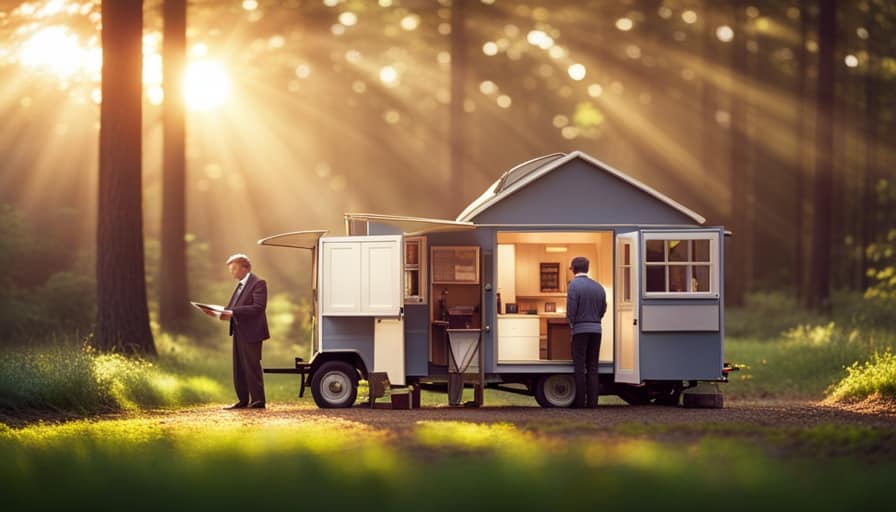
I have exciting news for all the budget-friendly tiny house fans out there! Brace yourself, as we are about to explore the realm of extremely affordable tiny house shells on wheels.
You won’t believe how cheap these gems can be. I’ve done my research, and I’m here to spill all the details on finding the best bargains, DIY methods, and cost-saving tips for customizing your dream home.
So, buckle up and prepare to embark on a journey towards affordable tiny house living!
Key Takeaways
- Affordable options for tiny house shells include using budget-friendly materials like reclaimed wood, recycled metal, and alternative building materials.
- DIY methods for building a budget-friendly tiny house shell include using reclaimed or salvaged materials, incorporating creative space-saving solutions, and repurposing items for storage.
- Bargains for cheap tiny house shells on wheels can be found by searching online marketplaces, attending local auctions, researching and comparing prices, and negotiating the price.
- Cost-saving tips for customizing a tiny house shell include utilizing multipurpose furniture, taking on DIY projects, maximizing storage with shelves and hooks, and looking for cost-saving hacks like repurposed furniture and DIY decor.
Researching Affordable Tiny House Shell Options
I’ll start by exploring different manufacturers that offer affordable tiny house shell options. When it comes to constructing a tiny house shell on a budget, it’s essential to consider using budget-friendly materials. Many manufacturers understand the need for cost-effective solutions and offer options that cater to this market. These include using materials like reclaimed wood, recycled metal, and alternative building materials. By using these budget-friendly materials, you can significantly reduce the overall cost of your tiny house shell build.

In addition to using budget-friendly materials, there are creative ways to save money on a tiny house shell build. One option is to purchase a pre-built tiny house shell from a manufacturer. This allows you to take advantage of their bulk purchasing power and expertise to get a high-quality shell at a lower cost. Another option is to explore DIY kits that come with pre-cut materials and instructions, allowing you to save money by doing the construction yourself.
Transitioning into the next section, let’s now explore DIY methods for building a budget-friendly tiny house shell.
Exploring DIY Methods for Building a Budget-Friendly Tiny House Shell
Let’s delve into various DIY techniques to construct a budget-friendly tiny house shell.
When it comes to building a tiny house on a budget, exploring alternative materials is key. Instead of traditional lumber, consider using reclaimed or salvaged materials to save money and reduce waste.

Additionally, creative space-saving solutions can make a big difference in maximizing the functionality of your tiny house. Utilize multifunctional furniture, like a sofa that converts into a bed or a foldable dining table.
Think outside the box and repurpose items for storage, such as using old suitcases as shelves or installing hooks on walls for hanging pots and pans.
Finding Bargains: Where to Look for Cheap Tiny House Shells on Wheels
Scouring online marketplaces and attending local auctions can be effective strategies for finding cheap tiny house shells on wheels. When searching for affordable options, it’s important to know where to look and how to negotiate the price. Here are some tips to help you in your search:
- Best websites for finding affordable tiny house shells on wheels:
| Website | Description |
|---|---|
| Tiny House Listings | A popular online marketplace for tiny houses |
| Craigslist | Local classifieds often have listings for shells |
| eBay | Auction-style platform with various options |
- Tips for negotiating the price of a cheap tiny house shell on wheels:
- Do your research and compare prices to know the market value.
- Be prepared to negotiate and offer a lower price.
- Highlight any repairs or modifications needed as leverage for a lower price.
- Consider purchasing in the off-season when prices might be lower.
Cost-Saving Tips for Customizing Your Tiny House Shell
When customizing my tiny house shell, I often look for cost-saving tips to stay within my budget. Here are some customization ideas and space-saving solutions that can help you save money while still creating a functional and beautiful tiny home:
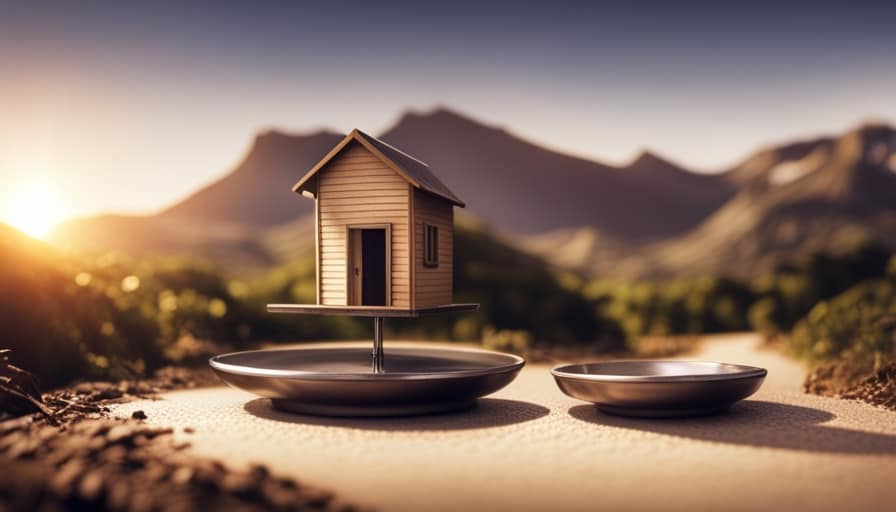
-
Utilize multipurpose furniture: Look for furniture pieces that can serve multiple functions, such as a sofa that can be transformed into a bed or a table with built-in storage.
-
DIY projects: Instead of buying expensive custom-built furniture or storage solutions, consider taking on some do-it-yourself projects. You can repurpose old materials or find affordable options at thrift stores or online marketplaces.
-
Optimize vertical space: Maximize storage by utilizing vertical space. Install shelves, hooks, and hanging organizers to make the most of every inch. You can also consider using wall-mounted folding tables or Murphy beds to save space.
Comparing Prices: How Much Can You Save With a Tiny House Shell on Wheels?
I saved a significant amount of money by comparing prices and opting for a tiny house shell on wheels rather than a traditional home. When I started exploring financing options for my tiny house, I was amazed at how much more affordable it was compared to a conventional house. Not only did I save on the initial cost of construction, but I also avoided the expenses associated with buying land and paying property taxes. Additionally, the mobility of a tiny house shell on wheels offers several benefits. I can easily move my home to different locations, allowing me to explore new areas and experience different communities. It also gives me the flexibility to live closer to work or family if needed. Overall, choosing a tiny house shell on wheels has not only saved me money, but it has also provided me with a sense of freedom and adventure.
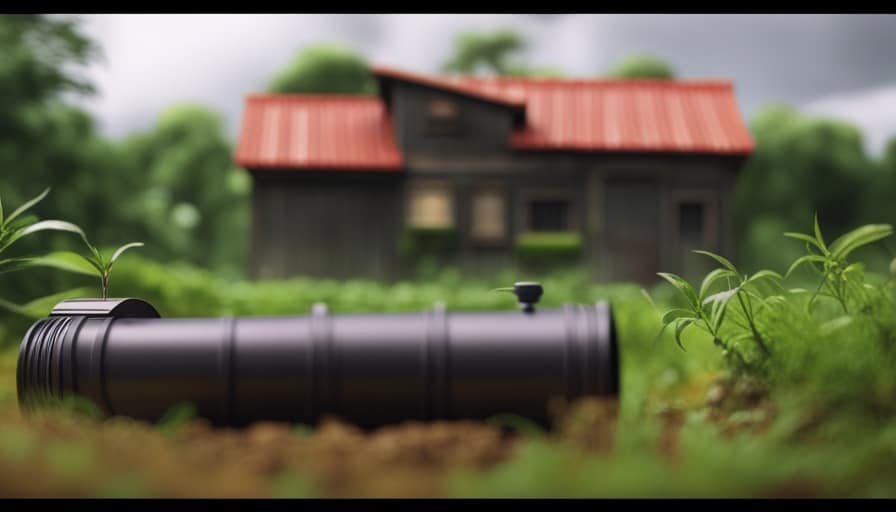
| Benefits of a Mobile Tiny House | Cost Savings |
|---|---|
| Mobility and flexibility | Lower construction cost |
| Opportunity to explore new areas | No property taxes |
| Ability to live closer to work or family | No land purchase expenses |
Frequently Asked Questions
What Are the Common Challenges Faced When Researching Affordable Tiny House Shell Options?
When researching affordable tiny house shell options, one of the common challenges is finding reliable information. It requires thorough research to ensure the options are truly affordable and meet one’s specific needs.
Are There Any Specific Materials or Techniques That Can Help in Building a Budget-Friendly Tiny House Shell?
Budget-friendly materials and construction techniques are essential when building a tiny house shell. By using cost-effective materials and efficient construction methods, it is possible to create a budget-friendly tiny house on wheels.
Where Can I Find Reliable Sources for Cheap Tiny House Shells on Wheels?
Finding affordable tiny house shells on wheels can be a challenge, but with some expert bargain hunting, it is possible to find reliable sources. It’s important to research extensively and compare prices to ensure you get the best deal.
What Are Some Cost-Saving Tips or Hacks for Customizing a Tiny House Shell?
When it comes to customizing a tiny house shell, there are several cost-saving tips and hacks to consider. From using budget-friendly materials to DIY projects, these strategies can help keep your expenses low while still creating a personalized and comfortable space.
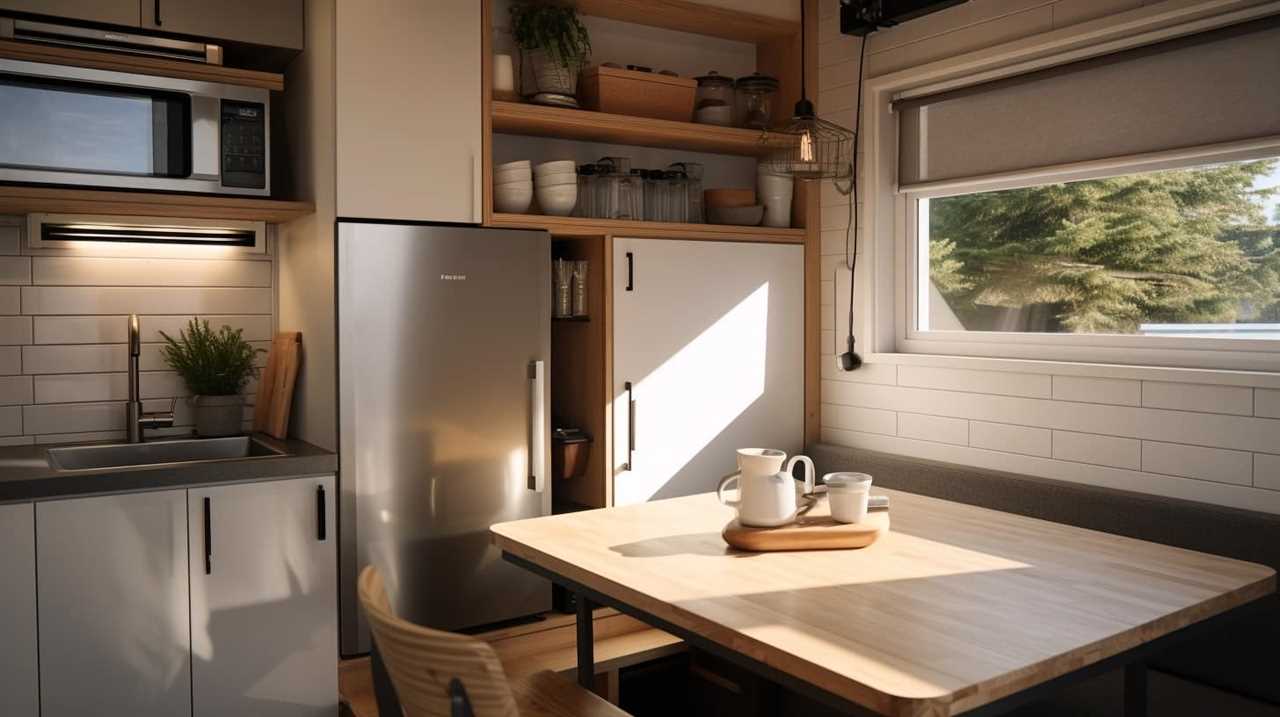
How Does the Price of a Tiny House Shell on Wheels Compare to Other Housing Options in Terms of Long-Term Savings?
In terms of long-term savings, a tiny house shell on wheels can offer significant financial benefits. Compared to other housing options, it allows for lower utility costs and fewer maintenance expenses, making it a cost-effective choice.
Conclusion
After researching affordable options and exploring DIY methods, it’s clear that a tiny house shell on wheels can be an incredibly cost-effective choice.
By finding bargains and utilizing cost-saving tips, individuals can customize their tiny house shell to fit their needs and save even more money.
Comparing prices will reveal just how much can be saved with this practical and budget-friendly housing solution.

So why wait? Take the leap into the world of tiny house living and start saving today.
I’m Theodore, and I love tiny houses. In fact, I’m the author of Tiny House 43, a book about tiny houses that are also tree houses. I think they’re magical places where imaginations can run wild and adventures are just waiting to happen.
While tree houses are often associated with childhood, they can be the perfect adult retreat. They offer a cozy space to relax and unwind, surrounded by nature. And since they’re typically built on stilts or raised platforms, they offer stunning views that traditional homes simply can’t match.
If you’re looking for a unique and romantic getaway, a tree house tiny house might just be the perfect option.
Beginners Guides
How Can You Save Money While Living in a Tiny House on Wheels

As someone who lives in a tiny house on wheels, I’ve discovered that downsizing does not equate to compromising financial stability. On the contrary, it can actually lead to improved financial security!
By embracing a minimalist lifestyle and making smart choices, I’ve discovered countless ways to save money. From efficient energy use to creative storage solutions, this article will show you how to keep more cash in your pocket while enjoying the freedom and simplicity of tiny house living.
Let’s dive in and uncover the secrets to financial freedom on the move!
Key Takeaways
- Incorporate smart home technology to efficiently use energy and reduce utility costs.
- Minimize maintenance costs by regularly inspecting and maintaining all systems and components.
- Utilize creative storage solutions to maximize space and reduce the need for additional storage.
- Grow your own food to save money and enjoy the benefits of fresh, homegrown produce.
Efficient Energy Use
I can save money by using efficient energy in my tiny house on wheels.
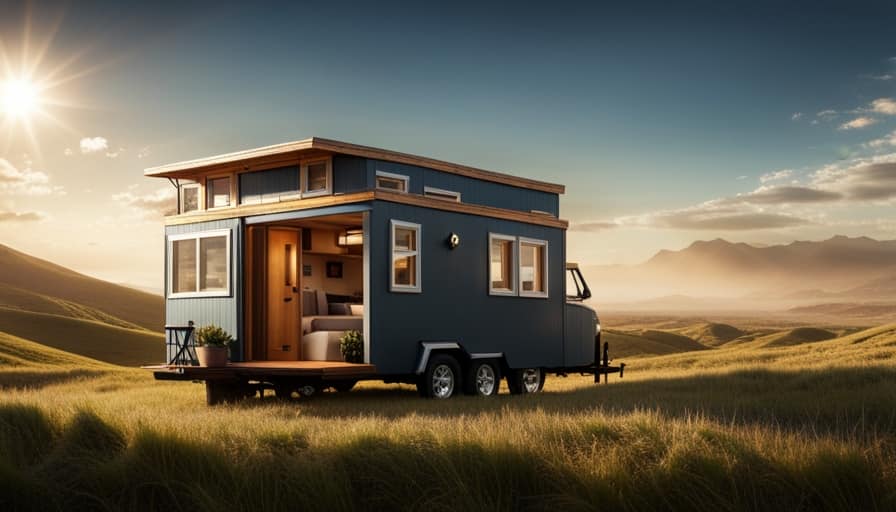
One way to achieve this is by incorporating smart home technology into my energy systems. Smart home technology allows me to monitor and control the energy consumption of my appliances and devices remotely. By using smart plugs, smart thermostats, and smart lighting systems, I can ensure that energy is only used when needed, reducing wastage and ultimately saving money.
Another way to save money is by utilizing renewable energy sources. Installing solar panels on the roof of my tiny house allows me to harness the power of the sun to generate electricity. Not only is this environmentally friendly, but it also reduces my reliance on the grid and lowers my energy bills. Additionally, using wind turbines or micro-hydro systems can further supplement my energy needs.
Minimizing Maintenance Costs
To minimize maintenance costs while living in a tiny house on wheels, it’s important to regularly inspect and maintain all systems and components. By taking a proactive approach, you can reduce the need for costly repairs and optimize the resources available to you. Here are some practical tips to help you minimize maintenance costs:
| Maintenance Tips | Benefits |
|---|---|
| Regularly check for leaks and water damage | Prevents costly repairs due to water damage |
| Clean and lubricate moving parts | Extends the lifespan of mechanical components |
| Keep the exterior clean and well-maintained | Prevents rust and deterioration |
| Inspect and maintain electrical systems | Reduces the risk of electrical issues and potential hazards |
Creative Storage Solutions
Maximizing storage space is crucial when living in a tiny house on wheels. In order to make the most of the limited space available, it’s important to utilize creative storage solutions.

One way to achieve this is by incorporating hidden compartments into your furniture. For example, you can have a bed with built-in storage underneath or a coffee table that opens up to reveal additional space. This allows you to keep your belongings neatly tucked away, while still having easy access to them.
Another option is to invest in multi-functional furniture. This means choosing pieces that serve more than one purpose. For instance, a sofa that can also be used as a bed or a dining table that can be folded away when not in use.
Growing Your Own Food
One way to save money while living in a tiny house on wheels is by growing your own food and incorporating it into your meals. Vertical gardening and hydroponic systems are excellent options for maximizing space and growing a variety of fruits, vegetables, and herbs.
Vertical gardening involves growing plants vertically, using walls or structures to support them. This allows you to make the most of limited space and grow a larger quantity of produce.
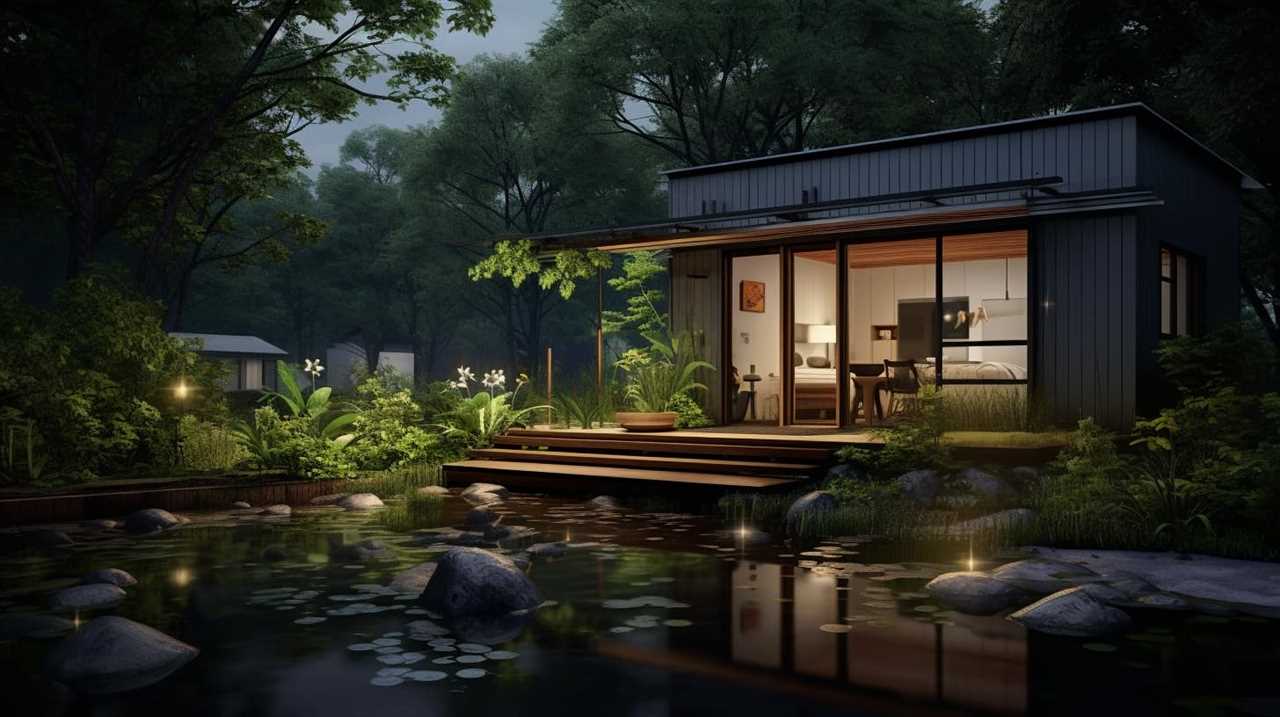
Hydroponic systems, on the other hand, allow you to grow plants without soil, using nutrient-rich water instead. This method is highly efficient and can produce higher yields compared to traditional gardening.
By growing your own food, you not only save money but also have the satisfaction of knowing exactly where your food comes from.
Transitioning into embracing a minimalist lifestyle, let’s explore how to downsize your possessions and simplify your living space.
Embracing a Minimalist Lifestyle
I love the freedom that comes with embracing a minimalist lifestyle in my tiny house on wheels. Living in a small space has forced me to reassess my belongings and prioritize what’s truly important.
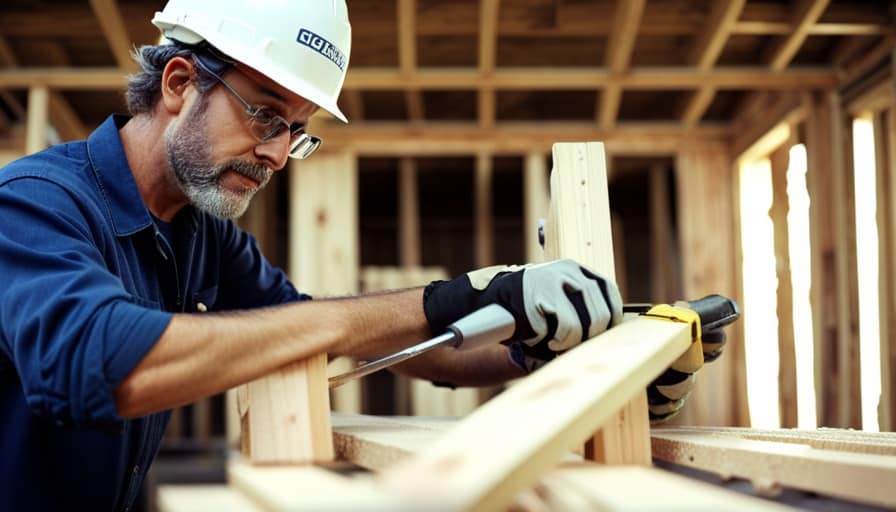
Here are three ways that embracing a minimalist lifestyle in a tiny house on wheels can lead to sustainable living and reduce your environmental impact:
-
Decluttering: By getting rid of excess possessions, you’re reducing waste and promoting a more mindful consumption. This leads to a simpler and more sustainable way of living.
-
Energy Efficiency: With limited space, you become more conscious of your energy consumption. Installing energy-efficient appliances and using natural light can significantly reduce your environmental footprint.
-
Eco-friendly Materials: Choosing sustainable and durable materials for your tiny house, such as reclaimed wood or recycled materials, not only reduces waste but also helps to preserve natural resources.
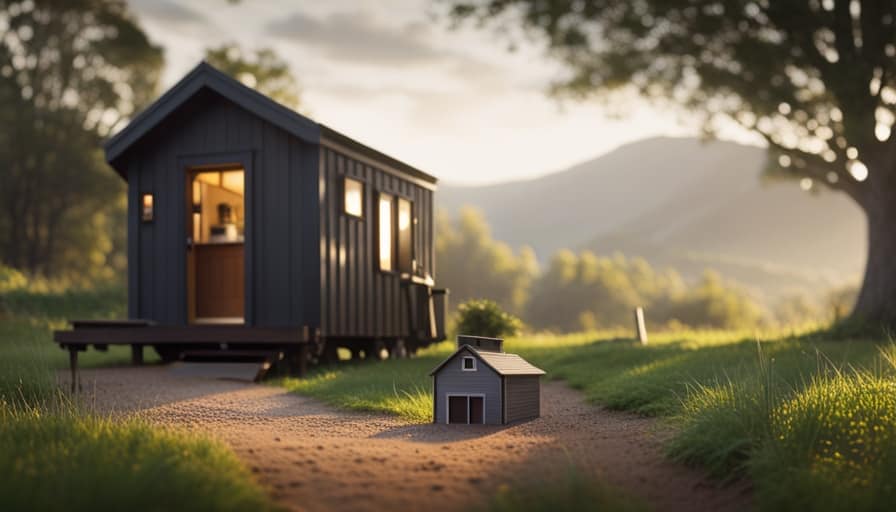
Embracing a minimalist lifestyle in a tiny house on wheels can’t only save you money but also contribute to a more sustainable and environmentally friendly way of living.
Frequently Asked Questions
How Can I Legally Live in a Tiny House on Wheels?
To legally live in a tiny house on wheels, you need to research and comply with local zoning laws and building codes. Ensure your tiny house meets all legal requirements and obtain necessary permits for parking and utilities.
What Are the Potential Challenges of Living in a Tiny House on Wheels?
Living in a tiny house on wheels presents potential challenges, such as limited space and mobility restrictions. However, with some tips and tricks, like minimizing possessions and conserving resources, it is possible to overcome these challenges and live comfortably.
Are There Any Specific Restrictions or Regulations for Parking a Tiny House on Wheels?
Parking restrictions and legal requirements for tiny houses on wheels vary depending on location. It’s important to research local zoning laws, building codes, and permit requirements to ensure compliance and avoid any potential fines or legal issues.
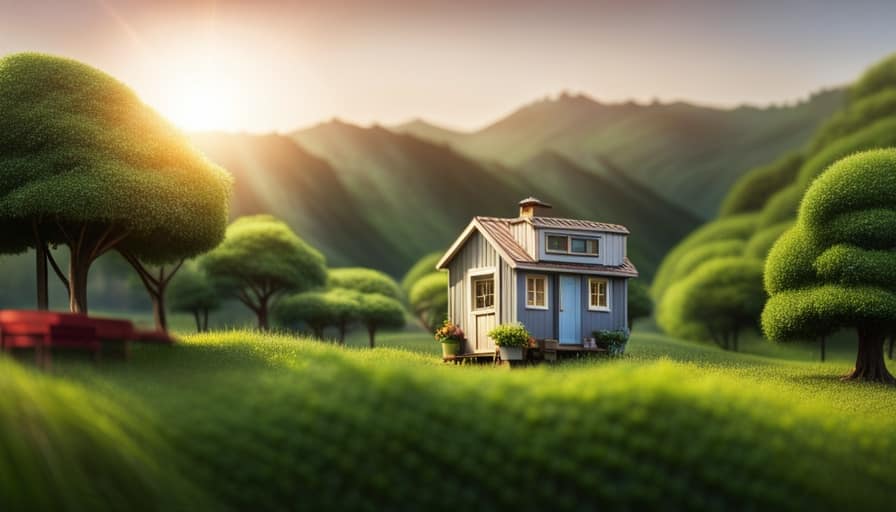
Can I Still Have a Comfortable and Functional Living Space in a Tiny House on Wheels?
Yes, it is possible to have a comfortable and functional living space in a tiny house on wheels. By maximizing storage, utilizing multipurpose furniture, and prioritizing organization, you can create a space that meets your needs.
How Can I Ensure the Safety and Security of My Tiny House on Wheels?
To ensure privacy and prevent theft in my tiny house on wheels, I can implement security measures like installing sturdy locks, using window coverings, and keeping valuable items out of sight.
Conclusion
Living in a tiny house on wheels can be a great way to save money. By focusing on efficient energy use, minimizing maintenance costs, creative storage solutions, and growing your own food, you can significantly reduce your expenses.
Embracing a minimalist lifestyle is also key to saving money in a tiny house. Did you know that the average cost to build a tiny house is only around $23,000, compared to the average cost of a traditional house, which is over $200,000?
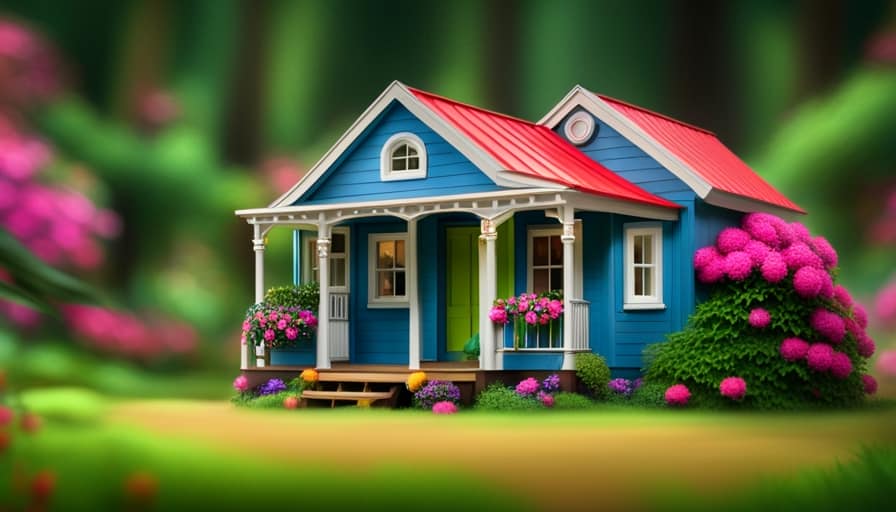
I’m Theodore, and I love tiny houses. In fact, I’m the author of Tiny House 43, a book about tiny houses that are also tree houses. I think they’re magical places where imaginations can run wild and adventures are just waiting to happen.
While tree houses are often associated with childhood, they can be the perfect adult retreat. They offer a cozy space to relax and unwind, surrounded by nature. And since they’re typically built on stilts or raised platforms, they offer stunning views that traditional homes simply can’t match.
If you’re looking for a unique and romantic getaway, a tree house tiny house might just be the perfect option.
Beginners Guides
How Cheap Can I Build a Tiny House Starting Now

- Building codes and safety requirements
- Environmental impact and sustainability measures
I’m here to let you know that constructing a small house doesn’t have to cost a fortune. Visualize a snug area, custom-made to suit your requirements, all within your financial means.
In this article, I’ll share practical tips and strategies for building a cheap tiny house starting right now. From planning your budget to finding affordable materials, I’ll guide you through the process of creating your dream home without breaking the bank.
Let’s get started on this exciting and budget-friendly journey!
Key Takeaways
- Determine available funds and explore different financing options to keep costs low
- Look for affordable building materials at salvage yards, thrift stores, and online marketplaces
- Consider the advantages and disadvantages of DIY versus hiring professionals based on personal preferences and skills
- Incorporate cost-saving design strategies such as using salvaged materials, maximizing space, and incorporating sustainable building methods
Planning Your Budget
I can start planning my budget by figuring out how much money I’ve to work with. It’s crucial to determine the amount of funds available before proceeding with any construction project.
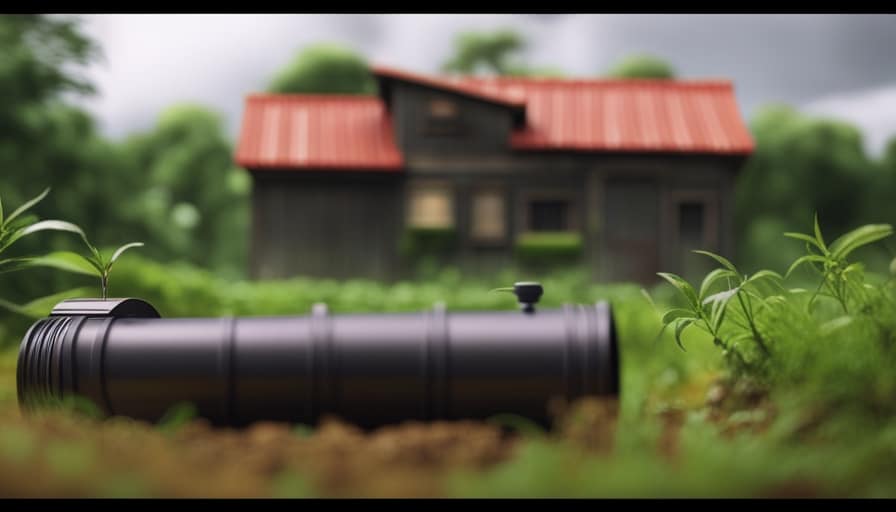
To ensure cost-effective construction methods, it’s essential to explore different financing options. This will help me identify the most suitable approach for my tiny house project. Researching and comparing various financing options, such as personal loans, home equity loans, or even crowdfunding, can provide me with the necessary resources to build my tiny house while keeping costs low.
Additionally, I can consider utilizing cost-effective construction methods, such as using recycled or repurposed materials, which can significantly reduce expenses.
Finding Affordable Materials
How can I find affordable materials for my tiny house project? Here are four ways to save money when it comes to finding materials:
-
Salvaging materials: Look for building materials at salvage yards, thrift stores, or online marketplaces. You can find reclaimed wood, windows, doors, and other items that are in good condition but at a fraction of the cost.
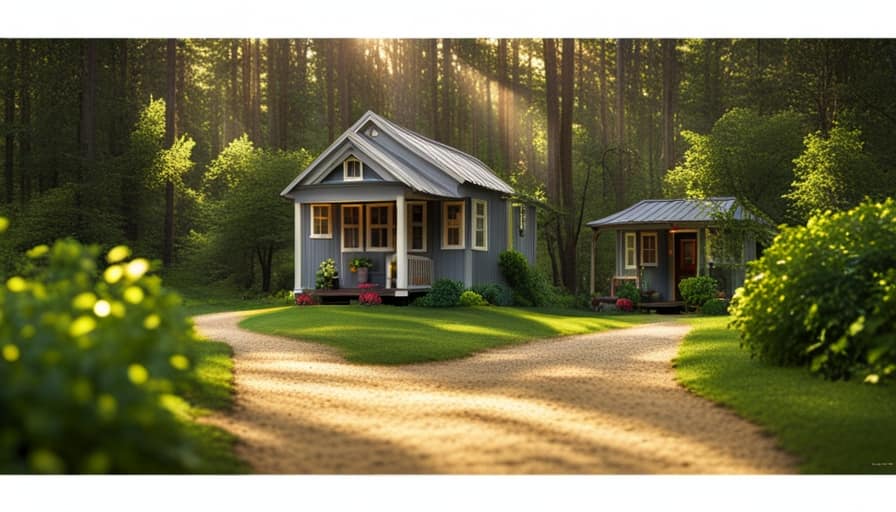
-
Bartering for supplies: Explore the option of bartering with others who may have excess materials or tools. You can trade your skills or services in exchange for the items you need for your tiny house. It’s a win-win situation for both parties involved.
-
Joining community groups: Connect with local community groups or online forums where people share resources and materials for their projects. You can find people who are willing to give away or sell their unused materials at a lower price.
-
Reaching out to local businesses: Contact local construction companies, hardware stores, or home improvement centers and ask if they have any excess or discounted materials. Sometimes, they may have leftover materials from larger projects that they’re willing to sell at a discounted price.
DIY Vs Hiring Professionals
The decision to hire professionals or take the DIY route is an important consideration when building a tiny house. Both options have their pros and cons, and it ultimately depends on your personal preferences and skills. Hiring professionals can ensure that the construction is done efficiently and up to code, but it can also be costly. On the other hand, DIY allows for personal satisfaction and potential cost savings, but it requires more time, effort, and expertise. To help you make an informed decision, here is a table highlighting the advantages and disadvantages of each approach:

| Professionals | DIY | |
|---|---|---|
| Pros | – Expertise | – Personal satisfaction |
| – Efficiency | – Potential cost savings | |
| Cons | – Higher cost | – Time-consuming |
| – Less control | – Requires skills |
Considering the pros and cons of hiring professionals versus taking the DIY route, it’s important to evaluate your own capabilities, budget, and desired level of involvement. Now, let’s explore some cost-saving design strategies for building a cheap but functional tiny house.
Cost-Saving Design Strategies
By employing cost-saving design strategies, I’ve discovered that it’s possible to build a cheap yet functional tiny house. Here are four sustainable building methods and repurposing materials that can help you save money while creating your dream tiny house:
-
Use salvaged materials: Instead of buying new, consider repurposing materials such as reclaimed wood, windows, and doors. You can find these items at salvage yards or online marketplaces, often at a fraction of the cost.
-
Optimize space: Maximize the functionality of your tiny house by designing multi-purpose furniture and storage solutions. Utilize built-in shelving, hidden compartments, and convertible furniture to make the most of every square inch.

-
Energy-efficient design: Incorporate sustainable building methods such as proper insulation, energy-efficient windows, and solar panels. These investments may initially cost more but will save you money in the long run by reducing energy bills.
-
DIY projects: Take on certain tasks yourself, such as painting, flooring, and basic carpentry. By learning new skills and doing the work yourself, you can significantly cut down on labor costs.
Tips for Minimizing Ongoing Expenses
One effective way I’ve found to minimize ongoing expenses is by implementing a monthly budget and tracking my spending. By carefully monitoring my expenses, I’m able to identify areas where I can cut costs and make more sustainable choices.
One important aspect of minimizing ongoing expenses in a tiny house is by investing in energy efficient appliances. These appliances may have a higher upfront cost, but they can significantly reduce energy consumption and save money in the long run.

Additionally, using sustainable building materials can help save on ongoing expenses. Materials such as reclaimed wood or recycled insulation not only reduce environmental impact but also provide cost savings by being more durable and requiring less maintenance.
Frequently Asked Questions
What Are the Necessary Permits and Regulations for Building a Tiny House?
When considering permits and regulations for building a tiny house, it’s important to prioritize adherence to building codes and safety requirements, as well as incorporating environmental impact and sustainability measures into the design and construction process.
How Much Does It Cost to Connect Utilities to a Tiny House?
To connect utilities to a tiny house, the cost will depend on factors like location, distance from existing infrastructure, and type of utilities needed. Off-grid living and alternative energy sources can help reduce the cost of connecting utilities.
Is It Possible to Build a Tiny House Without Any Construction Experience?
Building a tiny house without construction experience is challenging but possible. With tips and tricks for building on a budget and finding affordable materials, anyone can create their dream home.

Are There Any Zoning Restrictions or Limitations on Where I Can Park a Tiny House?
Zoning restrictions and parking limitations vary depending on the location. It’s crucial to research local regulations and consult with the appropriate authorities. Understanding these rules will help ensure a smooth process for parking your tiny house.
How Can I Finance the Construction of a Tiny House?
Financing the construction of a tiny house requires careful planning and budgeting. There are various financing options available, such as personal loans or RV loans. Research different lenders and compare interest rates to find the best deal.
Conclusion
In conclusion, building a cheap tiny house is definitely possible with careful planning and budgeting. By sourcing affordable materials, considering DIY options, and implementing cost-saving design strategies, you can create a functional and cozy living space without breaking the bank.
Remember, every penny saved adds up, so be diligent in finding the best deals and minimizing ongoing expenses. With a bit of creativity and resourcefulness, you can turn your dream of a tiny house into a reality.
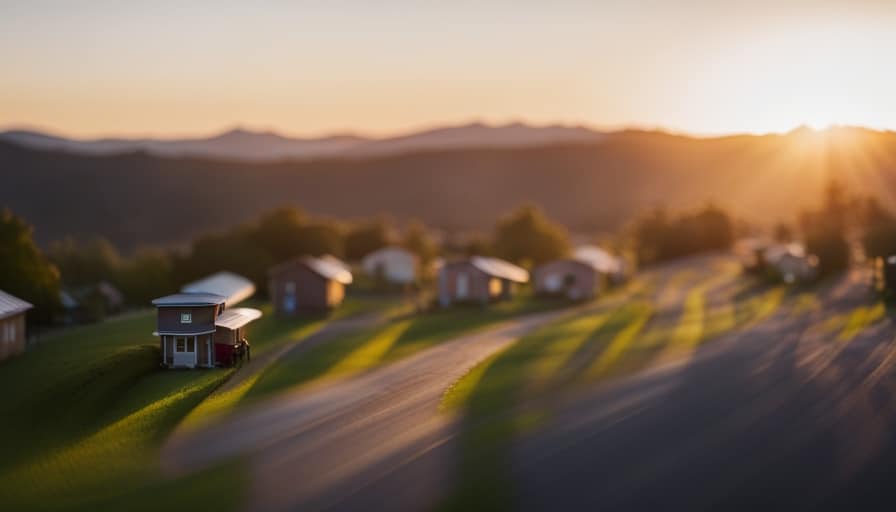
As the saying goes, ‘A penny saved is a penny earned.’
I’m Theodore, and I love tiny houses. In fact, I’m the author of Tiny House 43, a book about tiny houses that are also tree houses. I think they’re magical places where imaginations can run wild and adventures are just waiting to happen.
While tree houses are often associated with childhood, they can be the perfect adult retreat. They offer a cozy space to relax and unwind, surrounded by nature. And since they’re typically built on stilts or raised platforms, they offer stunning views that traditional homes simply can’t match.
If you’re looking for a unique and romantic getaway, a tree house tiny house might just be the perfect option.
-

 Beginners Guides1 week ago
Beginners Guides1 week agoHow To Buy A Tesla Tiny House
-

 Energy Efficiency1 month ago
Energy Efficiency1 month agoBest Tiny Homes For Cold Climates
-

 Beginners Guides7 days ago
Beginners Guides7 days agoTiny House Nation Where Are They Now Stephanie
-

 Tiny House Resources (e.g., legalities, cost, insurance, FAQs)2 months ago
Tiny House Resources (e.g., legalities, cost, insurance, FAQs)2 months agoDo Tiny Homes Need Planning Permission?
-

 Beginners Guides2 weeks ago
Beginners Guides2 weeks agoFrom The Show Tiny House Nation How Many Keep Their Tiny House?
-

 Beginners Guides2 months ago
Beginners Guides2 months agoUsing a Climbing Net For Treehouse Construction
-

 Beginners Guides2 months ago
Beginners Guides2 months agoHow to Build a Treehouse Without Drilling Into the Tree
-

 Beginners Guides3 weeks ago
Beginners Guides3 weeks agoTiny House Nation Who Pays For The Houses




